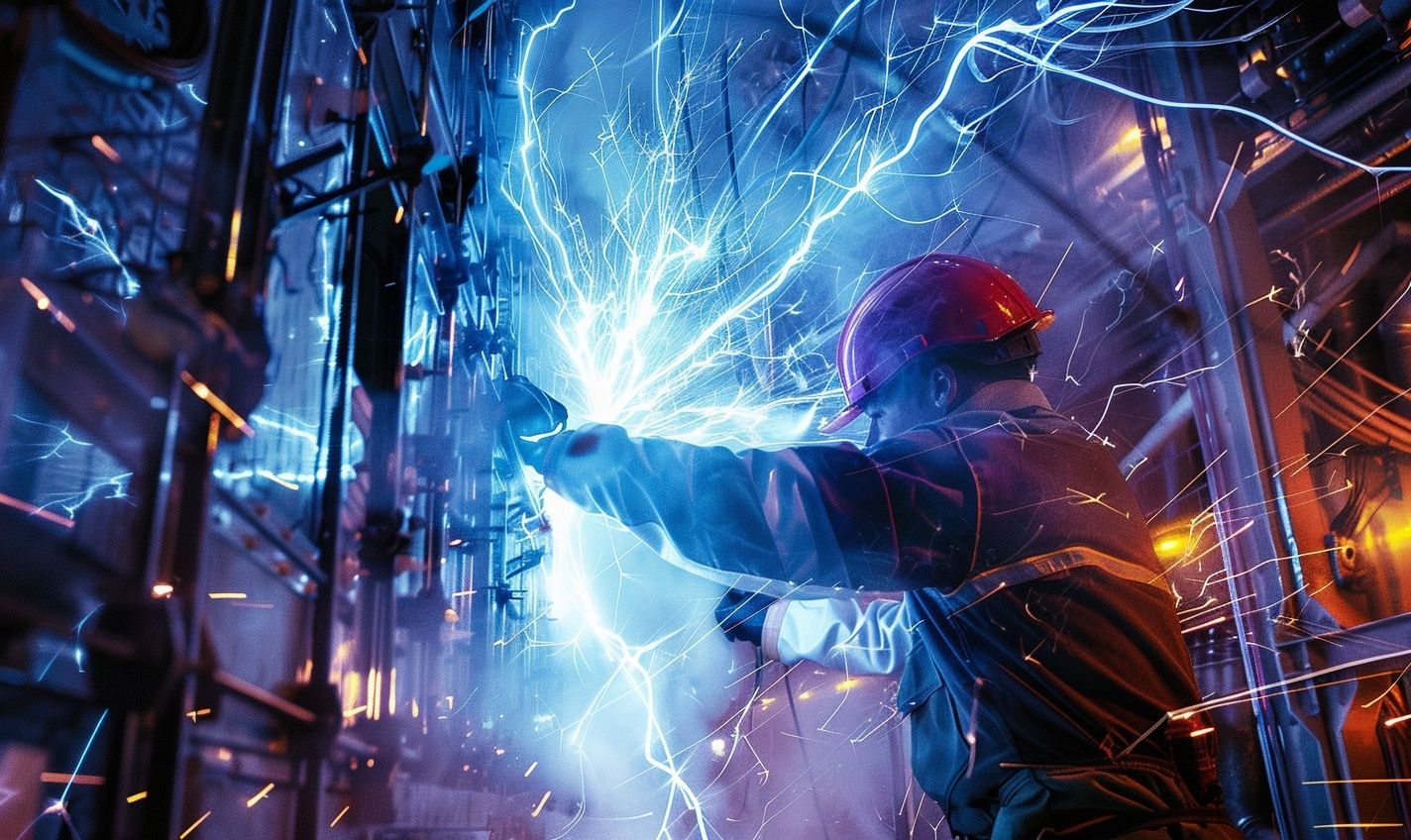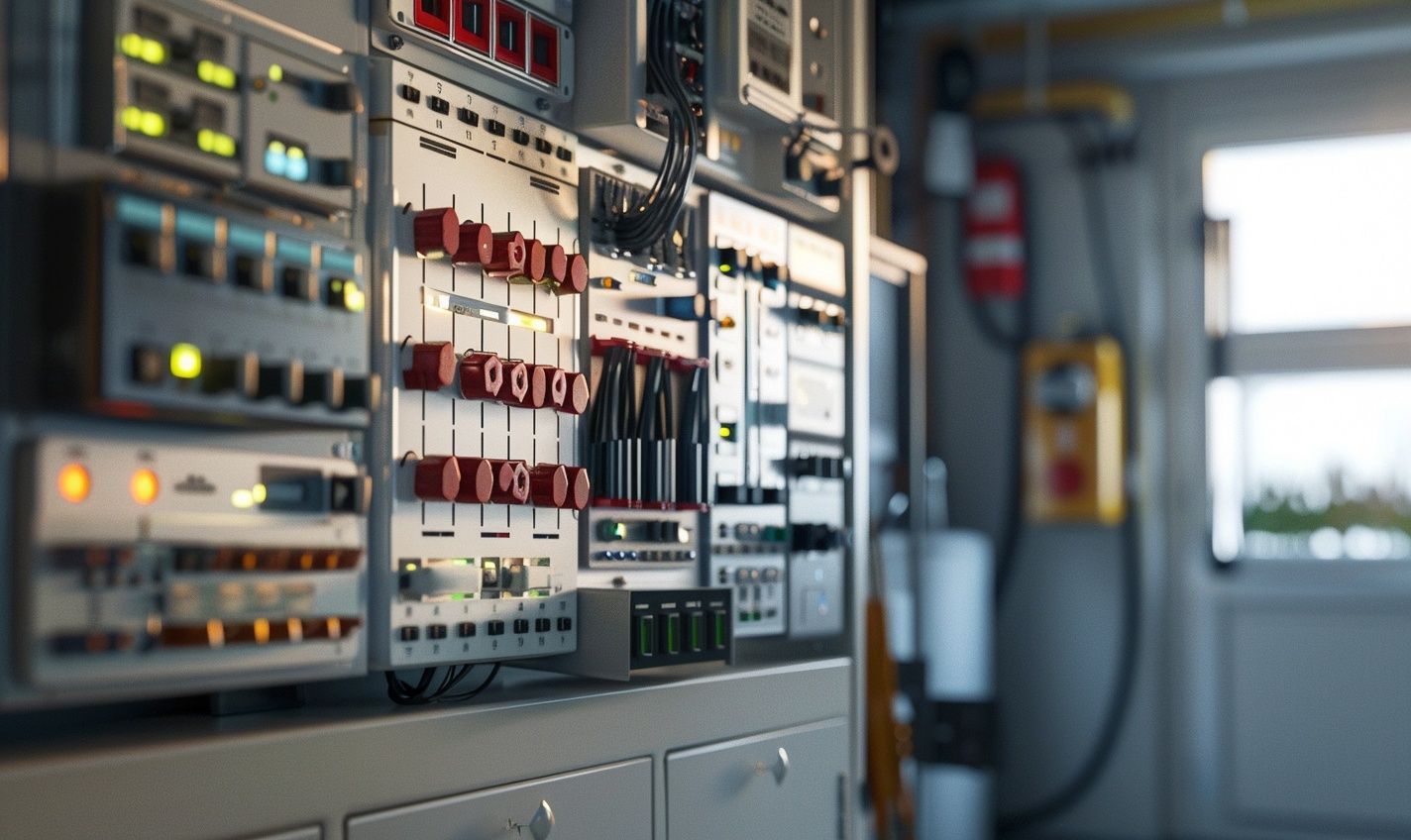
As a responsible homeowner, ensuring the safety of your garage should be a top priority. Among the various hazards that can pose a danger in your garage, electrical hazards are among the most common and potentially devastating. From faulty wiring to overloaded circuits, the risks are real and should not be overlooked.
Protecting your garage from electrical hazards is not just about preventing damage to your property but, more importantly, safeguarding your well-being and that of your loved ones. Understanding the potential dangers and taking proactive steps to address them can go a long way toward creating a safe and secure environment in your garage.
Electrical fires are a severe threat that can quickly occur without proper precautions. You can significantly reduce the risk of an electrical fire starting in your garage by implementing safety measures such as regular inspections, correct wiring, and using ground fault circuit interrupters (GFCIs).
In this blog post, we will explore how to protect your garage from electrical hazards, providing practical tips and advice on creating a safe and compliant electrical system. Let’s empower ourselves with knowledge and take action to ensure the safety of our garage spaces.

Understanding Electrical Hazards in Your Garage
A garage is a fantastic convenience, offering storage, workspace, or a place to tinker with your hobbies. But, as they say, with great power comes great responsibility, especially regarding electrical safety. Your garage can be a hotbed for potential hazards if not handled carefully.
The Sneaky Dangers Lurking in Your Garage
Your garage may seem innocuous, but hidden electrical dangers could be waiting to strike. Do you know how to identify and combat these risks?
- Exposed wiring
- Overloaded circuits
- Faulty outlets
Practical Ways to Shield Your Space
A proactive approach is critical to protecting your garage from electrical hazards. Are you ready to take control of your space and ensure a safe environment for yourself and your loved ones?
- Schedule regular inspections
- Proper placement of outlets
- Replace damaged cords immediately
Think of your garage as a living, breathing entity, with electrical currents flowing like its heartbeat. By maintaining this system, you’re keeping your space healthy and vibrant.

The Importance of Regular Inspections
When it comes to ensuring the safety of your garage, protecting your space from electrical hazards should be a top priority. One key aspect of maintaining safety is through regular inspections.
Understanding the Risks
Did you know that electrical malfunctions cause many garage fires? Overloaded circuits can lead to dangerous situations that put your property and loved ones at risk.
The Preventative Power of Inspections
Regular inspections act like a superhero cape, swooping in to save the day by identifying potential issues before they escalate. It’s like giving your garage a health check-up to catch any problems early on.
By conducting routine inspections, you can:
- Detect frayed or damaged wiring.
- Ensure outlets are not overloaded.
- Identify any signs of overheating.
DIY or Professional?
While some inspections can be done as part of your regular garage maintenance routine, bringing in a certified electrician for a more in-depth evaluation is essential. Think of it as calling in a specialist to ensure everything is in tip-top shape.
And because technology and safety standards evolve, having a professional inspection from time to time can help keep your garage up to code and compliant with regulations.
Creating a Schedule
But how often should you schedule these inspections? Think of it this way: just like you visit the doctor for a yearly check-up, your garage should undergo a thorough inspection at least once a year. It’s a small investment for long-term peace of mind.
Taking proactive steps to safeguard your garage from electrical hazards is not just about following rules. It’s about creating a secure environment for you and your loved ones. So, start incorporating regular inspections into your garage maintenance routine and stay one step ahead in protecting your space.

Proper Use of Extension Cords and Power Strips
Understanding the Risks
Properly using extension cords and power strips is crucial for electrical hazards in your garage. These seemingly harmless devices can pose serious risks if misused or overloaded.
Taking Preventive Measures
Ensuring the safety of your garage involves more than just storing tools properly. Here are some practical tips to protect your space from electrical hazards:
- Inspect cords and strips for any damage before each use.
- Avoid daisy-chaining multiple extension cords or power strips.
- Use only heavy-duty extension cords for power tools and equipment.
Why It Matters
Imagine the impact of a short circuit due to an overloaded extension cord. Not only could it damage your valuable tools, but it could also harm you or start a fire. Your garage is more than just a storage space; it’s a sanctuary that deserves to be protected.

Installing Ground Fault Circuit Interrupters (GFCIs)
Welcome back, DIY enthusiasts! When protecting your garage from electrical hazards, one critical aspect to consider is the installation of Ground Fault Circuit Interrupters (GFCIs). These nifty devices are designed to detect any imbalance in current flow, shutting off power in milliseconds to prevent electric shocks and potential fires.
The Basics of GFCIs:
- GFCIs are typically installed in areas where water and electricity may come into contact, such as bathrooms, kitchens, outdoor outlets, and, you guessed it, your garage!
- These devices continuously monitor the flow of electricity in a circuit and quickly cut off power if they sense a ground fault, protecting you and your loved ones from harm.
Installation Steps:
- Locate the circuit breaker that controls the outlet on which you plan to install the GFCI and switch it off.
- Remove the existing outlet cover and outlet, taking note of the wiring configuration.
- Connect the wires to the corresponding terminals on the GFCI outlet and secure them in place.
- Attach the GFCI cover plate and flip the circuit breaker back on to test the outlet.
Remember, folks, safety first! If you’re uncomfortable working with electrical wiring, hiring a licensed electrician to handle the installation is always best.
Why GFCIs Matter:
Think of GFCIs as your garage’s guardian angels. They constantly watch over your electrical system and are ready to swoop in and protect you from harm in the blink of an eye. With these devices in place, you can rest easy knowing that your garage is safer for you, your family, and your prized possessions.
So, whether you’re powering up your latest DIY project or simply looking to plug in your trusty power tools, outfit your garage with GFCIs to shield it from electrical hazards and enjoy peace of mind. At the same time, you tinker away in your haven.

Ensuring Proper Outlet Placement and Adequate Wiring
Hey there, garage enthusiasts! Let’s discuss one of the most crucial aspects of garage safety: protecting your space from electrical hazards. Today, we will discuss ensuring proper outlet placement and adequate wiring to keep your garage safe and sound.
Understanding the Basics
Did you know that the improper placement of outlets or faulty wiring can pose severe risks in your garage? You could face electrical fires or shocks if you make one wrong move. Scary, right?
Let’s Break It Down
But fear not! Following simple guidelines and best practices, you can keep your garage safe and secure for all your projects. Here’s how:
- Ensure outlets are properly grounded to prevent electric shocks.
- Place outlets at convenient locations to avoid the use of extension cords.
- Opt for dedicated circuits for heavy-duty tools to prevent overloading.
Why It Matters
Like a puzzle, every piece in your garage setup plays a vital role in the bigger picture. When your outlets are strategically placed and your wiring is up to par, you create a safe environment where you can work without worry.
Protecting your garage from electrical hazards isn’t just about following rules and regulations – it’s about safeguarding your space and well-being. So, take the time to assess your outlet placement and wiring to keep risks at bay.

Protecting Your Garage from Electrical Hazards
While the garage is a practical space for many homeowners, it can pose significant electrical hazards if not properly managed. Understanding how to keep your garage safe from potential dangers is essential for the well-being of your home and family.
Importance of Regular Inspections
Regular inspections of your garage’s electrical system can help detect potential issues before they escalate into dangerous situations. Look out for frayed wires, overloaded circuits, and outdated outlets that need upgrading.
Proper Use of Extension Cords and Power Strips
Using extension cords and power strips safely in your garage is crucial. Avoid daisy-chaining multiple cords together, and never exceed the maximum load capacity. Unplug devices when not in use to prevent overheating.
Installing Ground Fault Circuit Interrupters (GFCIs)
GFCIs are designed to protect you from electric shocks by quickly shutting off power when a fault is detected. Install GFCIs in areas where water is present, such as near sinks or on the garage floor, to reduce the risk of electrical accidents.
Ensuring Proper Outlet Placement and Adequate Wiring
Ensure your garage has enough outlets to accommodate your power needs without overloading circuits. Avoid using extension cords as a permanent solution, and consider hiring a professional electrician to assess the wiring in your garage.
Safe Handling and Storage of Flammable Materials
When storing flammable materials in your garage, take extra precautions to prevent accidents. Consider the following safety tips:
- Store flammable liquids in approved containers away from heat sources.
- Keep a fire extinguisher within easy reach in case of emergencies.
- Avoid smoking or using open flames near combustible materials.
Protecting Your Garage from Overloading Circuits
Overloaded circuits can lead to electrical fires and damage your appliances. To prevent this, distribute your electrical devices across different circuits and avoid plugging multiple high-wattage devices into the same outlet.

Protecting Your Garage from Overloading Circuits
Hey there, DIY enthusiast! We’ve covered the basics of electrical safety in your garage, but there’s one crucial aspect we haven’t delved into yet: protecting your space from overloading circuits. Let’s explore some essential tips to keep your garage safe from electrical hazards.
Mindful Electrical Usage
When you’re tinkering away in your garage, getting carried away with all your power tools and gadgets is easy. But remember, just like a plate piled too high with food, overloading your circuits can lead to a messy – and dangerous – situation. Here’s how you can prevent it:
- Spread out your power-hungry tools across different outlets.
- Avoid daisy-chaining extension cords to prevent overheating.
- Unplug devices when not in use to reduce electrical load.
Invest in Quality Equipment
Imagine your garage as a bustling workshop – each tool requiring its slice of the electrical pie. To ensure your pie is evenly sliced, invest in quality circuit protection and distribution:
- Consider installing a dedicated circuit for heavy-duty tools.
- Upgrade to a heavy-duty extension cord for more extensive power needs.
- Use power strips with built-in overload protection to safeguard your equipment.
Know When to Call for Help
While you may be a wizard with a wrench, electrical work is best left to the pros. If you notice any of the following signs of electrical trouble, don’t hesitate to call in an electrician:
- Flickering lights or frequent circuit tripping.
- Burning smell or sparking outlets.
- Warm or discolored switch plates.
Remember, a well-protected garage is a safe garage. Following these simple steps, you can ensure your workspace remains a haven for DIY adventures. Stay safe, and keep those creative sparks flying!
Conclusion
Ensuring the safety of your garage from electrical hazards is crucial for protecting your property and loved ones. Following the tips and guidelines discussed in this blog post can significantly reduce the risk of accidents or fires caused by electrical malfunctions.
Remember to regularly inspect your electrical systems, avoid overloading outlets, and hire a qualified electrician for any repairs or installations. Proper safety measures, such as installing GFCI outlets and using extension cords properly, can go a long way toward safeguarding your garage.
Taking proactive steps to protect your garage from electrical hazards provides peace of mind and ensures a secure and compliant space for household activities or storage needs. Don’t wait for an accident to happen – prioritize electrical safety in your garage today.
By incorporating these practices into your routine maintenance and being vigilant about potential risks, you can create a safer environment for yourself and your family. Stay informed, stay prepared, and always prioritize safety regarding electrical systems in your garage.
Frequently Asked Questions (FAQs)
1. What are common electrical hazards in a garage?
Common electrical hazards in a garage include overloaded circuits, exposed wires, outdated wiring, and faulty outlets.
2. How can I protect my garage from electrical hazards?
You can protect your garage by avoiding overloading circuits, using GFCI outlets, keeping electrical cords away from water sources, and ensuring all wiring is up to code.
3. Is it essential to have a professional inspect the electrical system in my garage?
Yes, it is crucial to have a qualified electrician inspect your garage’s electrical system regularly to ensure safety and compliance with regulations.
4. Why should I avoid using damaged electrical cords in the garage?
Damaged cords can pose a fire hazard and increase the risk of electrical shock. It’s essential to replace them immediately.
5. Are power strips safe to use in a garage setting?
Power strips can be used in a garage, but to prevent electrical hazards, they must be avoided by overloading and ensured to be in good condition.
6. What should I do if I experience frequent circuit breaker trips in my garage?
Frequent circuit breaker trips indicate an overloaded circuit or a potential wiring issue. Contact a professional electrician to diagnose and resolve the problem.